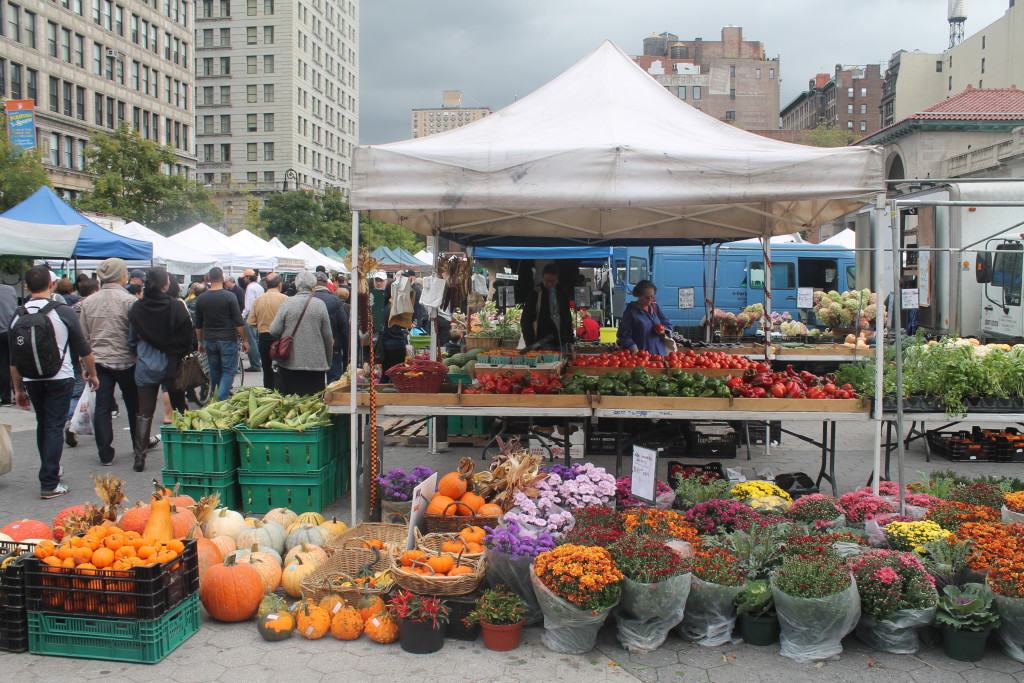In the depths of winter, we crave decadent comforting foods to keep the chillier temperatures at bay. One of the season’s most versatile spices, nutmeg can go sweet or savory, bringing to life pumpkin, squash and potato recipes. It also adds a subtle magic to the whipped cream atop wintry mugs of hot chocolate and Irish coffee. It’s a cozy, sensual spice that has delicious warming qualities. Nutmeg is aromatic, nutty, slightly sweet, with a bit of woodiness that lends a touch of nostalgia to any dish. While this familiar spice may seem innocent enough, it holds a rich and twisted history. Nutmeg was the justification for brutal wars and enslavement in a hostile spice trade takeover. As a commodity, it was once more valuable than gold, revered for its medicinal effects. It also has hallucinogenic properties and has been used as an abortifacient to end unwanted pregnancies.
How it All Began:
Nutmeg is native to Banda, a ten-island archipelago in the Banda Sea, part of Indonesia. The spice islands, as they were known, were “discovered” by European explorers in the 1500s. At the time, the exotic nutmeg tree grew nowhere else on earth, so it was incredibly profitable to whomever controlled it. The spice was revered for its antimicrobial properties and was considered a miracle elixir for a bunch of ailments which made it even more valuable. Though the islands were inhabited with native people who were already harvesting, selling and trading the spice, European colonizers set their sights on extracting this precious resource to enrich their own empires. It started with the Portuguese landing on the island of Ternate, looking to capitalize on the era’s booming spice trade. Then, the Spanish wanted to get in on the act and dispatched ships, eventually landing on the Maluku Islands north of the Banda Sea. While the Portuguese flourished, the Spanish returned to their homeland deeming the islands and spices not worth all the trouble of travel. In 1600, the Dutch dispatched a fleet to the islands. Once landed, they coerced the Bandanese to solely trade with them and were able to load up their ships with spices including nutmeg, mace and pepper. They returned to Amsterdam uneventfully with their bounty. But they weren’t done with the spice islands.
In 1602, the Dutch decided they wanted to take over the islands to secure a monopoly on the very lucrative trade, so they formed the Dutch East India Company (Verenige Oost-Indische Compagnie or VOC.) In 1609, they descended on the region and tried to force the Bandanese leaders, known as the orang kaya, to once again trade solely with them. The Bandanese refused their hostile demands, instead convincing the Dutch army to meet the leaders inland thus abandoning all their weaponry on the shore. Their army was overtaken and killed by the indigenous troops. In retaliation, the VOC arrived in Banda in 1621 and demanded the island. When the Bandanese resisted, the militarily powerful Dutch responded brutally. Within a few days, they took over the neighboring island Lontor. Within a few weeks, they forced Banda’s leaders off the islands, and massacred the Bandanese people. Whoever they didn’t kill, they captured, enslaving them to work the newly founded spice plantations. Within a few months, the Dutch murdered 90 percent of the indigenous population, roughly 10,000 people, and killed a slew of British soldiers who stood in the way of their taking over the island. Nutmeg was considered so desirable that this terrible genocide happened all because of a spice.
The battle between the Dutch and British for the spice islands continued to rage on. After the massacre, the Dutch controlled the majority of the islands, with the British holding on furiously to Run, the last of the nutmeg producing land that the Dutch hadn’t yet conquered. Finally tired of all the violent, expensive combat, the two countries signed a treaty. The British were willing to turn over Run, in exchange for a different Dutch-colonized island, far away in the Northern Hemisphere, that they had long coveted. In 1667, the Dutch gained authority of the last, tiny spice island and turned over the island of Manhattan (yes, New York City) to the British.
Original Uses:
Despite this tumultuous past, nutmeg was esteemed for its warming and calming properties. It was believed to be a medicinal panacea, effective in treating everything from rheumatism to cholera. In the Middle Ages, nutmeg was thought to be an abortifacient that could be used to end unwanted pregnancies. Women would ingest large quantities of the seed in hopes of termination. Although consuming massive amounts of nutmeg’s highly volatile chemical compound would not lead to the intended outcome. Instead it induced nausea, vomiting, disorientation, dizziness, and even hallucinations. By the 16th century, the spice was used to cure colds, soothe skin disorders and to aid in stomach ailments. When the bubonic plague hit Europe in the mid 1660’s, nutmeg was used to manage the disease’s symptoms of pain, vomiting, and the swelling of lymph nodes. Thereby deeming it the cure. One popular remedy in Britain was called “Dr. Burges’s Plague Water” and was made by boiling nutmeg and pepper in sweet Malmsey wine. As nutmeg’s reputation as a cure-all grew, the price of the aromatic nut skyrocketed.
Getting High:
Nutmeg contains the chemical compounds myristicin and elemincin, both closely related to amphetamine (also used in the designer drug MMDMA) and can cause a hazy, drugged-up experience accompanied by psychedelic visions, similar to LSD. Charlie Parker, the famed jazz musician is rumored to have introduced nutmeg to his band who drank teaspoons of it in milk or coca cola. Malcolm X was in prison when he first tried ingesting nutmeg, which was known to be a cheap high amongst prisoners who would smuggle it out of the kitchen in matchboxes. It was rumored that swallowing a box full was said to produce a high that was akin to smoking three or four joints. Proponents of the recreational use of nutmeg claim that unlike marijuana, nutmeg intoxication could last for days. In 2020, “the nutmeg challenge” went viral on TikTok. Appealing to bored, impressionable teenagers stuck at home during the midst of a global pandemic, the challenge called to ingest two to four tablespoons of the spice mixed in water. While many tried this “nutmeg high” and even filmed the effects of the intoxication, many also ended up in the hospital with far more severe symptoms than feeling stoned or having a psychedelic trip. The high is merely one symptom of a toxic overdose reaction; ingesting too much of the spice can be incredibly dangerous, leading to seizures, liver damage and even death.
Modern Cooking:
While nutmeg has a sorted past and its powers have been abused, its most familiar use is, of course, to season food. It is sold as a whole brown seed that can be finely grated using a microplane rasp or found more commonly as a ground powder. Though it is most known for its use in holiday recipes complementing spices such as clove and cinnamon, nutmeg is a versatile ingredient that adds a layer of aromatic earthiness to a variety of dishes. It can be whisked into a silky béchamel sauce. It’s the secret ingredient in a rich vichyssoise. The flavor enhances the woodiness of mushrooms. As it’s used to top eggnog, it also works beautifully in scrambled eggs and quiches. Sprinkled on sautéed spinach or kale brings out the earthiness of the greens. It adds depth to the sweetness of acorn and butternut squashes. It’s divine in macaroni and cheese and mashed potatoes. But, it also works well on a pork roast or mixed into ground turkey as meatballs or meatloaf. Lastly nutmeg is one of the key components in pumpkin pie and pumpkin spice lattes.
This tough little nut survived its haunting past and is now grown widely around the world. It is readily available to enhance the flavors of a multitude of cuisines. While a little intoxication is surely fun, play it safe and use just a pinch of potent nutmeg in recipes and reserve trips for travel.
Candi Cane Canncel is a writer/designer/artist originally from Miami Beach. Her food writing has been featured in the French magazine Club Sandwich. Her recipes and party planning tips have appeared on ehow, Livestrong, OurEverydayLife, and Leaf.tv. She was the Sewing Editor of Craftgossip.com, the Lifestyle and Food / Drink Contributor for the Seattle-based Belltown Local.com, and has been a featured expert on The Learning Channel, HGTV, and the DIY Network.





